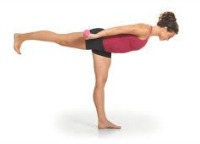What’s your favorite way to exercise? Is it Yoga? H.I.I.T. workouts? Running?
Have you ever hurt yourself in a way that prevented you from doing it for more than a few days?
When you have a solid exercise habit and injury interrupts it, the best thing to do is to find another way to maintain your fitness. But that can be frustrating because you are giving up what is familiar and comfortable.
Simply giving up on exercise for the duration is really not an option. You want to keep your base fitness until your injury has healed so that you can get back to doing what you love when your body is ready.
How Can I Still Move My Body?
What you need to do is find the best way to move your body despite its injury.
The place to start is always with your doctor. Check in with them to see what you are allowed and not allowed to do.
They may have recommendations for you in terms of types of exercise, what to stay away from, and what level of exertion you are allowed depending upon your injury.
Once you’ve gotten the “all clear”, keep in mind that you don’t have to exercise at full strength while you’re injured.
Researchers have found that athletes who have to cut back can keep their current level of fitness by exercising just once a week, as long as they work to about 70% of their V02 max.
TweetSo you just need to find a way to exercise the parts of your body that aren’t injured while resting the one that is.
This isn't as hard as it sounds. There are so many options available for ways to stay fit, and many of them offer you the opportunity to discover a new form of exercise that you may just end up loving.
Here are some suggestions for ways to keep moving your body after each type of injury.
Back Injuries
Hurting your back is probably the toughest injury to deal with, so let’s start there.
Most people find that swimming is the best exercise for those who have low back pain. It allows you to stretch and strengthen the muscles without jarring vertebrae.
Your other options are to walk or explore some light Yoga stretches.
Shoulder or Elbow Injuries
This type of injury can keep you from the sport that you love, and also from a lot of weight training and upper body movements. But you can still do most cardio exercises.
I don't recommend long cardio but shorter cardio sessions (like you would find in a H.I.I.T. workout) of 3-5 minutes will offer all you need maintain your level of fitness.
Try walking for 2 minute, jog for 1 minutes…walk for 3 minutes, jog for 2 minutes. Then start over until 20 minutes has passed.
You can still do weight training for the lower body and core too.
Leg, Knee, Ankle and Foot Injuries
These are tough, especially if you enjoy running.
Deep water running and swimming are both good options that will give you enough cardio and help strengthen the muscles.
Do weight training of the upper body and core, and don’t rule out the use of the hand cycle machines. They provide a great non-weight bearing cardio workout. Again, do the cardio in shorter “blasts” in between some less intense movements.
Be Mindful
Oh and one last thing that's super important!
Listen to your body. Give it the time it needs to heal.
You don't want to delay recovery because you pushed yourself too hard. Be especially kind to yourself when you're moving your body while it mends.
And if it's weight loss you're concerned about take this time to focus on eating clean, healing foods. This will help your weight loss efforts even more than working out and it will give your body the nutrients it needs to heal quickly.
Yours in health,
Danette
P.S. Please share this with your loved ones and I welcome your comments below.






